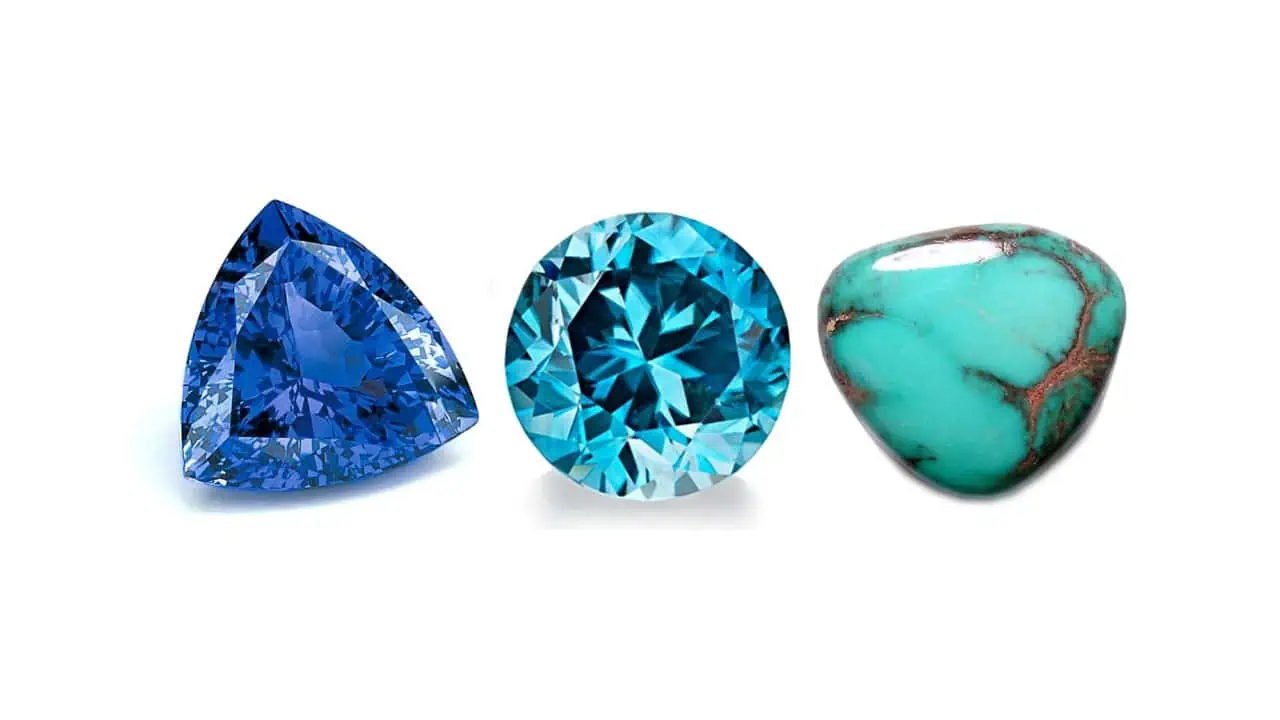Note from the Nomad: I’m a yogi, not a doctor! Any information provided here about the healing properties of crystals is based on historical or traditional beliefs and is not intended as medical advice; always consult a healthcare professional for medical concerns.
Tanzanite, Blue Zircon, and Turquoise are the December birthstones. So December babies are truly lucky as they have three beautiful gemstones to choose from. All of them are known for their stunning blue hues but are also believed to bring good luck and happiness to those who wear them.
Moreover, these precious gemstones share a rich history and symbolic meanings. People adorned and wore them for centuries, which is why regardless of which stone you choose, they all create timeless dazzling pieces of jewelry.
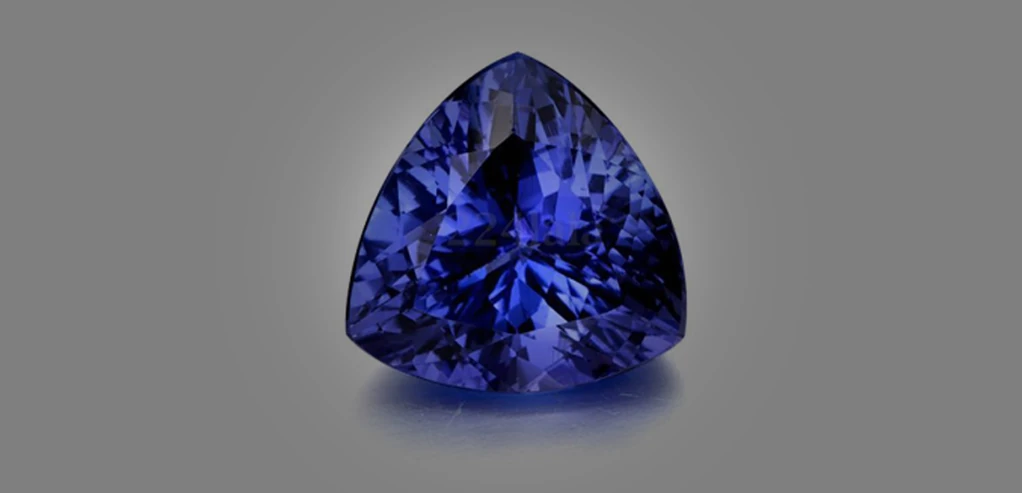
Contents
- 1 December Birthstone Tanzanite
- 2 Where is Tanzanite Found?
- 3 Color and Appearance
- 4 History and Metaphysical Properties
- 5 How to Care for Your Tanzanite
- 6 December Birthstone Blue Zircon
- 7 History and Origin
- 8 Get Familiar with Blue Zircon
- 9 Where is Zircon found?
- 10 Metaphysical Properties
- 11 Blue Zircon Used in Yoga Meditation
- 12 How to Care for Your Zircon
- 13 December Birthstone Turquoise
- 14 Turquoise Color and Appearance
- 15 History and Origin
- 16 Turquoise Stone Legends in Native American Tribes
- 17 Metaphysical Properties
- 18 Where is Turquoise found?
- 19 How to Care for Your Turquoise
- 20 FAQ
December Birthstone Tanzanite
| TANZANITE | |
|---|---|
| Nickname | The Stone of Magic |
| Appearance |  |
| Benefits and healing properties | 1. Communication Enhancement - Encourages clear, articulate expression 2. Intuition - Heightens psychic abilities and spiritual awareness 3. Emotional Healing - Provides calming energy, aids in stress relief |
| Protects against | 1. Stress - Promotes calmness and emotional stability 2. Lack of Communication - Enhances verbal expression and communication 3. Disconnection - Aids in spiritual exploration and psychic abilities |
| Associated chakra | Throat Chakra, Enhances communication, self-expression, truth. Third Eye Chakra, Boosts intuition, psychic abilities, insight. Crown Chakra, Facilitates spiritual connection, wisdom, consciousness. |
| Associated birth month and zodiac sign | December (Sagittarius, Capricorn) |
| Physical characteristics | Color: Blue-violet with purple highlights; pleochroic, showing different colors when viewed from different angles Structure: Orthorhombic crystal system Mineral Class: Zoisite Hardness (Mohs Scale): 6-7 |
| Region(s) commonly found in | Merelani Hills, northern Tanzania |
| Alternate spellings & misspellings | tanzanit, tansanite, tanzenite, tanzinite, tanzanight |
| Where to buy and learn more | See latest price |
December’s birthstone tanzanite is a newcomer to the birthstone market as it was discovered in 1967. Initially mistaken for sapphire, the unique gem with blue and violet hues was soon identified as a new variety of gemstones and captured the hearts of all gem lovers.
A year after its discovery, Tiffany & Co. recognized the stone’s potential and became the official international distributor. In addition, they named the blue stone tanzanite in honor of its African host country, Tanzania. With its popularity rising and Tiffany’s great marketing agenda, in 2002, tanzanite was officially crowned as the third December birthstone, along with turquoise and zircon.
Where is Tanzanite Found?
Tanzanite is unique in appearance but also when it comes to its origin. This December birthstone can only be found in Tanzania, making it truly rare and precious. Masai tribesman Ali Juuyawatu discovered the gems while traveling in East Africa. He noticed bright blue-violet stones pocking from the ground in Merelani Hills, northern Tanzania, under the shadow of Africa’s tallest mountain Kilimanjaro.
Due to only one location as the source of the stone, it is believed that tanzanite resources, a blue-purple variety of the mineral zoisite, will finish in 30 years. In simple words, the current generation will be the only one having the chance to purchase new tanzanite. Therefore, if you own this birthstone, treasure it and take good care of it.

Color and Appearance
December’s birthstone, tanzanite, is a richly colored pleochroic gemstone appearing in blue and violet colors, often with purple highlights depending on the angle you see. As a result, all tanzanite gemstones can appear in mixed combinations of different colors displayed at the same time, making each stone unique. Hence, you get a mesmerizing and multi-dimensional piece of jewelry guaranteed to leave an impression every time you wear it.
History and Metaphysical Properties
When it comes to Tanzanite history and folklore, there aren’t many stories to be told since the stone has been recently identified. However, this does not affect its popularity, as this December’s birthstone has even rivaled the Big 3 of precious stones – diamond, sapphire, and ruby. Today, this gem is a traditional birthstone given to celebrate the 24th wedding anniversary.
In the beginning, when the Masai tribesman discovered the gems, it was believed they had a strong and powerful connection with the forces of nature. After all, the lightning strikes that sparked a wildfire raising the temperature on the ground led to the brownish gems displaying the famous blue and violet hues. This is why people believed the gem to be associated with the wild power and magic of the natural world.
Additionally, the rich colors that tanzanite displays are said to have different powers and symbolism. For example, blue is considered to be deeply spiritual and connected with heaven and life. Furthermore, blue tanzanite is believed to have the power to heal, boost vitality, and provide emotional stability.
Purple and violet tanzanite gems are said to be the symbol of royalty and spiritual leaders. Moreover, they are believed to be connected with the Crown Chakra allowing its wearer to find wisdom and heighten their intuition.
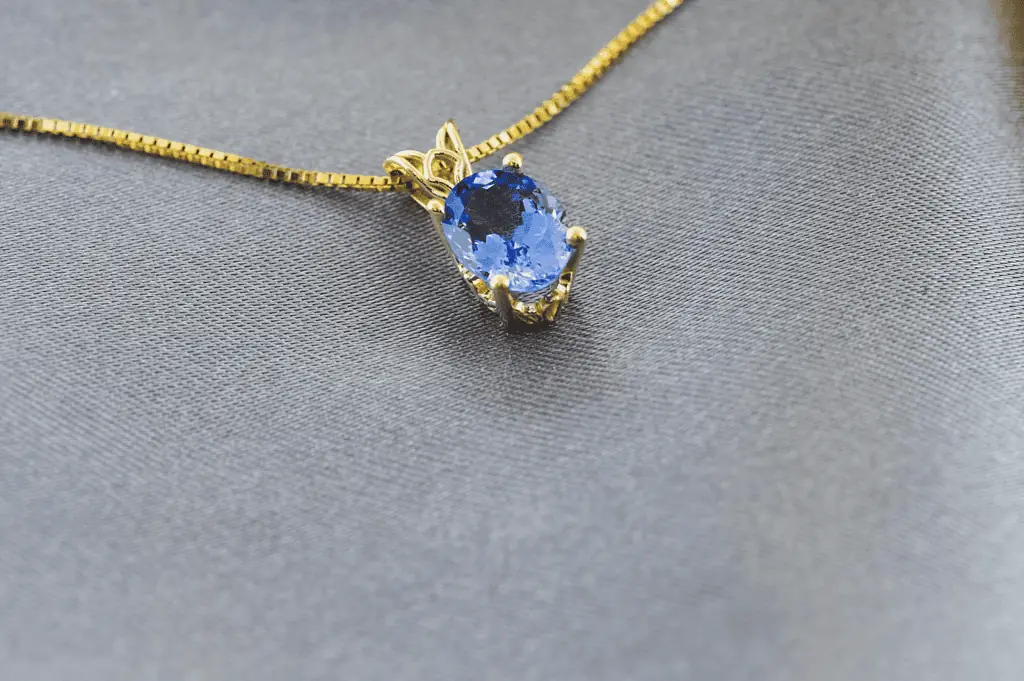
How to Care for Your Tanzanite
On the Mohs hardness Scale, this December birthstone ranges from 6 to 7, making it softer compared to other gemstones. However, it is still safe for everyday wear, although it might be better to wear it as a pendant, earring, or necklace rather than as a birthstone ring.
When you clean your birthstone, be gentle and use only mild, soapy water and a soft cloth. Don’t forget that tanzanite is sensitive to high temperatures and abrades easily. Therefore, avoid using ultrasonic machines, steam cleaners and strong chemicals.
When it comes to its color, although the gem is heat treated to display blue to violet shades, the resulting color is permanent. So there is no need to worry about the color fading or changing with time.

December Birthstone Blue Zircon
| BLUE ZIRCON | |
|---|---|
| Nickname | The Study Stone |
| Appearance |  |
| Benefits and healing properties | 1. Mental Clarity - Enhances clear thinking 2. Prosperity - Attracts wealth and abundance 3. Confidence - Boosts self-esteem and courage |
| Protects against | 1. Insomnia - Promotes restful sleep, wards off nightmares 2. Negative Energy - Shields from evil spirits, enhances protection 3. Physical Ailments - Alleviates pain from sores, supports healing |
| Associated chakra | Throat Chakra, Enhances communication, self-expression, and mental clarity. |
| Associated birth month and zodiac sign | December (Sagittarius, Capricorn) |
| Physical characteristics | Color: Vibrant blue to sky blue Structure: Tetragonal crystal system Mineral Class: Zircon Hardness (Mohs Scale): 6 to 7.5 |
| Region(s) commonly found in | Cambodia, Burma (Myanmar), Sri Lanka, Australia, Malawi |
| Alternate spellings & misspellings | blue zircone, blue zircan, blu zircon, blue zircorn, blue zircom |
| Where to buy and learn more | See latest price |
The second birthstone of December is lovely zircon, famously known for its refractive index and one of the gems that look most like a diamond. This gem is often confused for cubic zirconia, which is a lab-grown diamond simulant. It is famous for its outstanding brilliance, strong dispersion or fire, and the tendency to split white light into a range of colors.
Zircon, also referred to as the “stone of virtue,” comes in different colors, such as red, orange, yellow, brown, green, and blue. However, in 1952, the American Gem Society replaced lapis lazuli with blue zircon as the official December birthstone. In addition, it is the 4th wedding anniversary celebration stone.
History and Origin
Zircon’s presence dates back 4.4 billion years, making it the oldest mineral on Earth. As a result, this gem carries a vibrant history and incredible historical value due to its relevance to geology and culture. Namely, this December birthstone looks at the past, describing pressure changes and erosion shifts through Earth’s history.
The origin of the name “zircon” is the subject of debate. On one side, there is the theory that “zircon” comes from the Arabic word “zarkun,” meaning “vermilion” or “cinnabar.” On the other hand, some scholars believe the name originates from the Persian word “zargun,” meaning “gold-like.” Nonetheless, both theories are possible, taking into consideration the broad spectrum of colors that zircon displays.
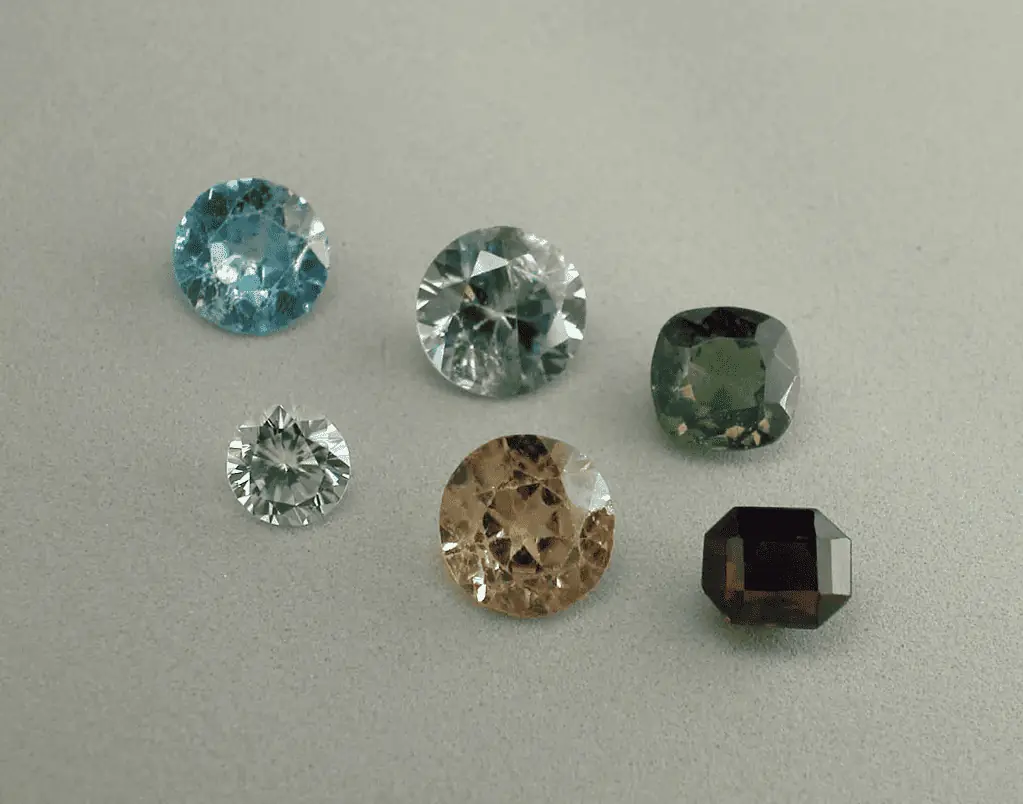
Get Familiar with Blue Zircon
Colorless zircon reflects light well and exhibits fire and brilliance, so the gem was confused with diamonds for centuries and synthetic cubic zirconia. When heat treated, the birthstone displays a vivid blue or sky-blue color. Moreover, when exposed to direct sunlight, the color fades for some time but returns to its original color after being placed in a cool, dark place.
This stone is known for changing colors at different angles of viewing, instantly captivating the hearts of all gem lovers. In addition to the eye-catching blue hues, zircon occurs in green, red, white, and honey-gold colors. However, the finest blue zircon specimens display strong green hues and medium tones.
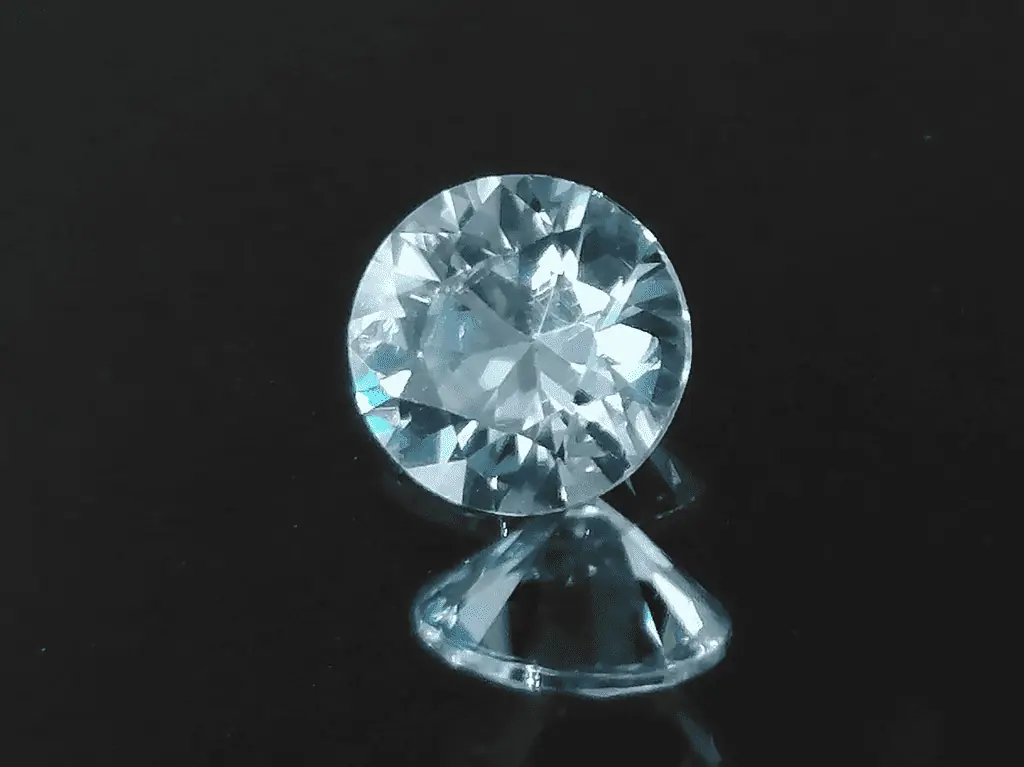
Where is Zircon found?
December birthstone Zircon forms naturally, but how it forms is still a mystery since the process occurs deep below the ground. Furthermore, after multiple studies and research of other planets such as the Moon, Mars, and Mercury, most scientists agree that zircon forms a result of tectonic plate collating. In addition, Earth’s harsh atmosphere in the early years significantly contributed to zircon formation.
Sri Lanka’s Elahera mine is one of the most prominent sources of zircon. It is also called “Gem Island” because it also produces blue, yellow, and pink sapphire, moonstone, tourmaline, hessonite garnet, and many more precious gems.
Australia’s Harts Range mine is another prominent source of yellow-brown, orangy-brown, pink, and purple zircon. Zircon Hill in Australia is home to these December birthstones, and the country produces about 37% of the zircon gemstones.
Overall, only Cambodian and Burmese zircon were known to display a blue color with heat treatment, but blue zircon sources were discovered in Maripa in southern Malawi as well. Interestingly, zircon mine regions are also known to produce sapphires, as these two tend to form near each other.
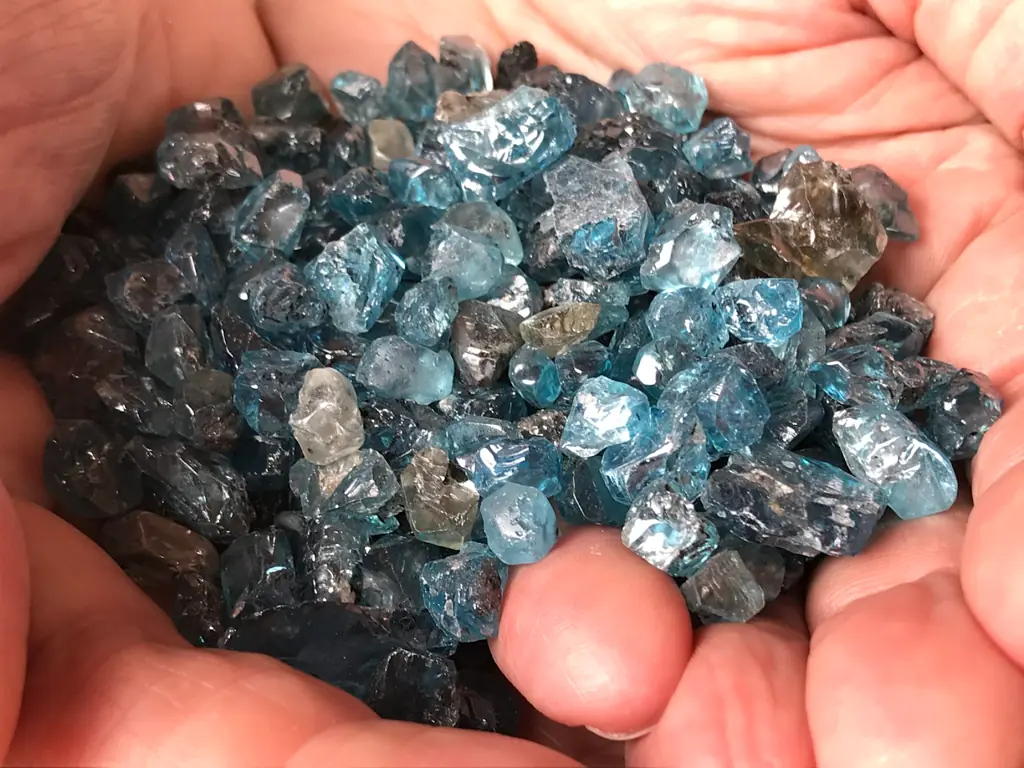
Metaphysical Properties
In the Middle Ages, zircon was believed to have the ability to induce sleep, protect against evil spirits during sleep, and alleviate physical ailments like blisters, sores, and varicose veins. In religious writing dating from this period, it was also discovered that people used to believe that the stone protected them from death, harm, and poison.
In the Hindu religion, this December birthstone is one of the nine gemstones of Nava Ratna, a jeweled pendant symbolizing celestial bodies. When worn together, the nine gems form a powerful talisman that protects against negative energies and brings good health, wisdom, and wealth.
In more recent history, during the Victorian period, the English had quite a lust for zircon. As a result, some exquisite examples can be found in English estate jewelry from the 1880s. In addition, many estate pieces from that era featured zircon shades. Also, cloudy or smoky zircon was a popular choice for jewelry while in mourning.

Blue Zircon Used in Yoga Meditation
Blue zircon is associated with wisdom, prosperity, and confidence. For centuries, people have used it to decorate necklaces and other accessories, convinced it would protect them and enhance their intuition. Namely, zircon is said to possess a protective aura, and people use it in meditation to help them gain clarity and organize their thoughts.
The December birthstone is thought to have the power to remind one of forgotten wishes, granting purity of mind, honor, and a clear path to one’s goals and desires, which is why it is a powerful yoga meditation gemstone.
How to Care for Your Zircon
On the Mohs scale of hardness, zircon ranges from 6 to 7.5, which makes the stone suitable for everyday wear, but you need to be extra careful if it is a birthstone ring, as it can chip. In addition, since it is commonly heat-treated to produce a blue variety or other colors, some heat-treated stones tend to revert to their original colors (usually light brown) after extended exposure to bright light.
Clean your December birthstone zircon using warm air, mild soap, and a soft brush. Steam or ultrasonic cleaners are not recommended. Finally, since this December birthstone tends to abrade, it is best not to wear it while gardening, playing sports, or doing dishes.
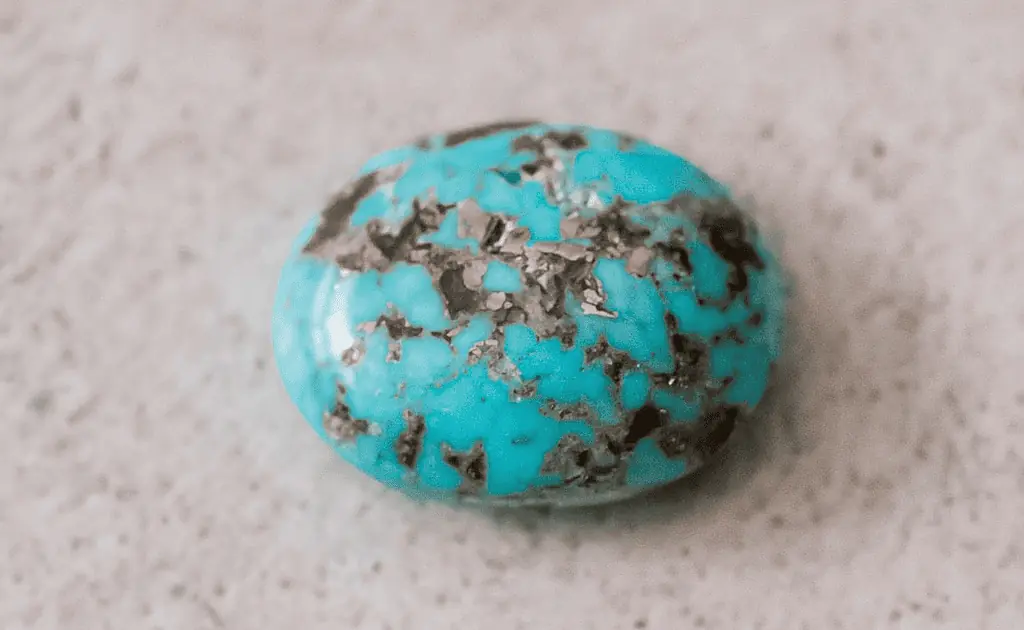
December Birthstone Turquoise
| TURQUOISE | |
|---|---|
| Nickname | The Master Healer Stone |
| Appearance |  |
| Benefits and healing properties | 1. Healing - Promotes physical and emotional healing 2. Protection - Acts as a talisman against harm 3. Communication - Enhances communication and expression |
| Protects against | 1. Anxiety - Promotes emotional balance and peace 2. Negative Energy - Absorbs negative vibrations, fosters positivity 3. Physical Pain - Believed to alleviate cramps and pain |
| Associated chakra | Throat Chakra, Enhances communication, calms the mind. Heart Chakra, Promotes emotional balance, fosters compassion. |
| Associated birth month and zodiac sign | December (Sagittarius, Capricorn) |
| Physical characteristics | Color: Intense blue to green hues, often with veins of matrix Structure: Tri-clinic Mineral Class: Phosphate Hardness (Mohs Scale): 5-6 |
| Region(s) commonly found in | Iran, United States (Arizona, Nevada), China |
| Alternate spellings & misspellings | turqouise, turquois, turqoise, torquoise, turquoize |
| Where to buy and learn more | See latest price |
The third birthstone, turquoise, is the traditional December birthstone. It is a semi-translucent to opaque gem displaying intense blue to green hues and often has veins of a matrix (remnants of the rock in which it formed) running through it. As a result, its complexity and uniqueness give it cult-like worship from gem lovers, making it one of the most intriguing birthstones.
December birthstone turquoise has been prized and cherished for thousands of years. However, it became one of December’s birthstones in 1912 when the American National Association of Jewelers replaced bloodstone and ruby with turquoise and lapis lazuli. Later in the early 1950s, lapis lazuli was replaced with blue zircon as one of the three official December birthstones.
Turquoise Color and Appearance
Turquoise is a stunning gem popular for its intense blue hue and intricate patterns. However, unlike tanzanite and turquoise, this birthstone for December has an opaque appearance rather than being translucent. It combines hydrated copper phosphate and aluminum with a distinct tri-clinic structure that can be waxy to the touch, glassy, or dull in appearance.
Although known for its blue hues, this December birthstone can also display bright blue-green to green to yellowish-green shades. The gemstones containing high levels of copper appear a lot bluer. On the other hand, the gems with high iron levels usually appear greener. Less common is turquoise, with high levels of zinc that appear in a more yellow hue.
Lastly, the turquoise with a “bright robin’s egg blue” shade is highly prized and considered the most valuable. Any other color variations, such as green or yellow, may reduce the stone’s worth.
History and Origin
Turquoise is the second oldest among December’s birthstones. Ancient cultures considered it to be a holy stone, and royal figures, kings, queens, pharaohs, and leaders proudly wore it. Chinese artisans carved turquoise more than 3,000 years ago, and today, it is considered a traditional 11th wedding anniversary gift.
The name “turquoise” origins from the French expression “Pierre torques,” which means “Turkish stone.” It is because although the stone was first found in Egypt as early as 4000 BC, Historians believe that turquoise first came to Europe through Turkey around the thirteenth century. Since then, the gem has been believed to grant health and good fortune. So in the past, horse riders wore it to keep them safe and prevent them from falling off their horses. In addition, according to European tradition, a turquoise ring given to someone as a gift symbolizes “forget me not.”
For centuries turquoise birthstone was used in burial ceremonies, and gem specimens were found in burial sites in western Iran and ancient Egyptian tombs. King Tutankhamun’s burial mask in ancient Egypt was made from turquoise. Egyptians also believed the stone enhanced a warrior’s precision, so it was often attached to their swords.
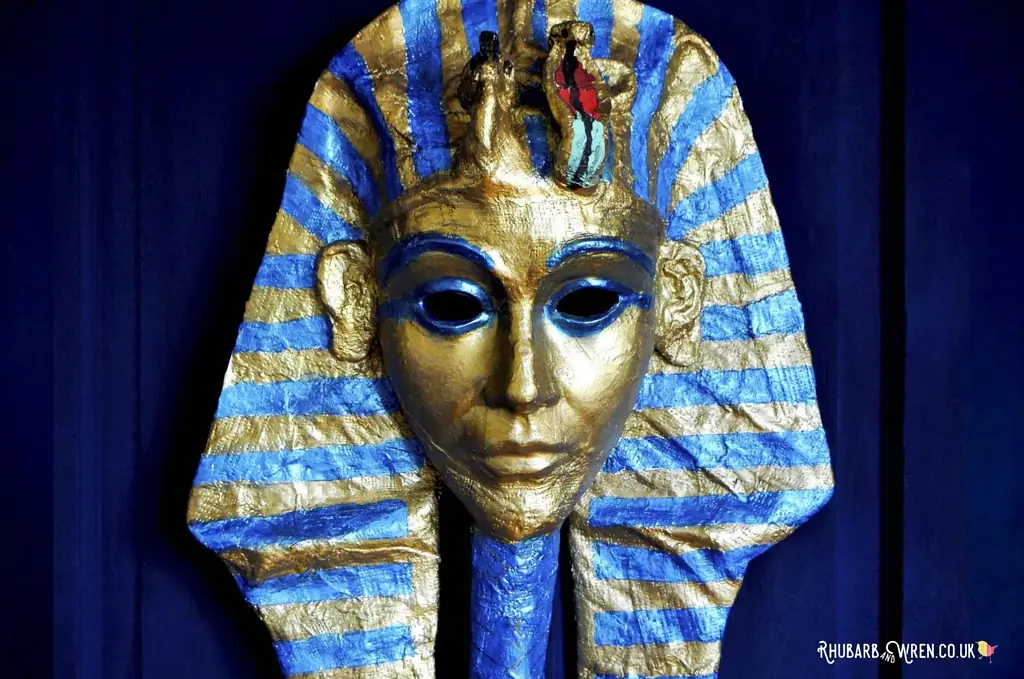
Turquoise Stone Legends in Native American Tribes
Native American tribes nurtured a deep history with this December birthstone. They carved turquoise into different shapes and used it as family heirlooms and in rituals. They also attached the gem on bows and firearms, convinced it would grant them accuracy and precision.
The Apache believed there was a turquoise stone at the end of the rainbow instead of a pot of gold. They also used the gem as a good luck charm and believed a shaman (physician) must possess this birthstone for authenticity and to be able to heal and effectively ward off evil spirits.
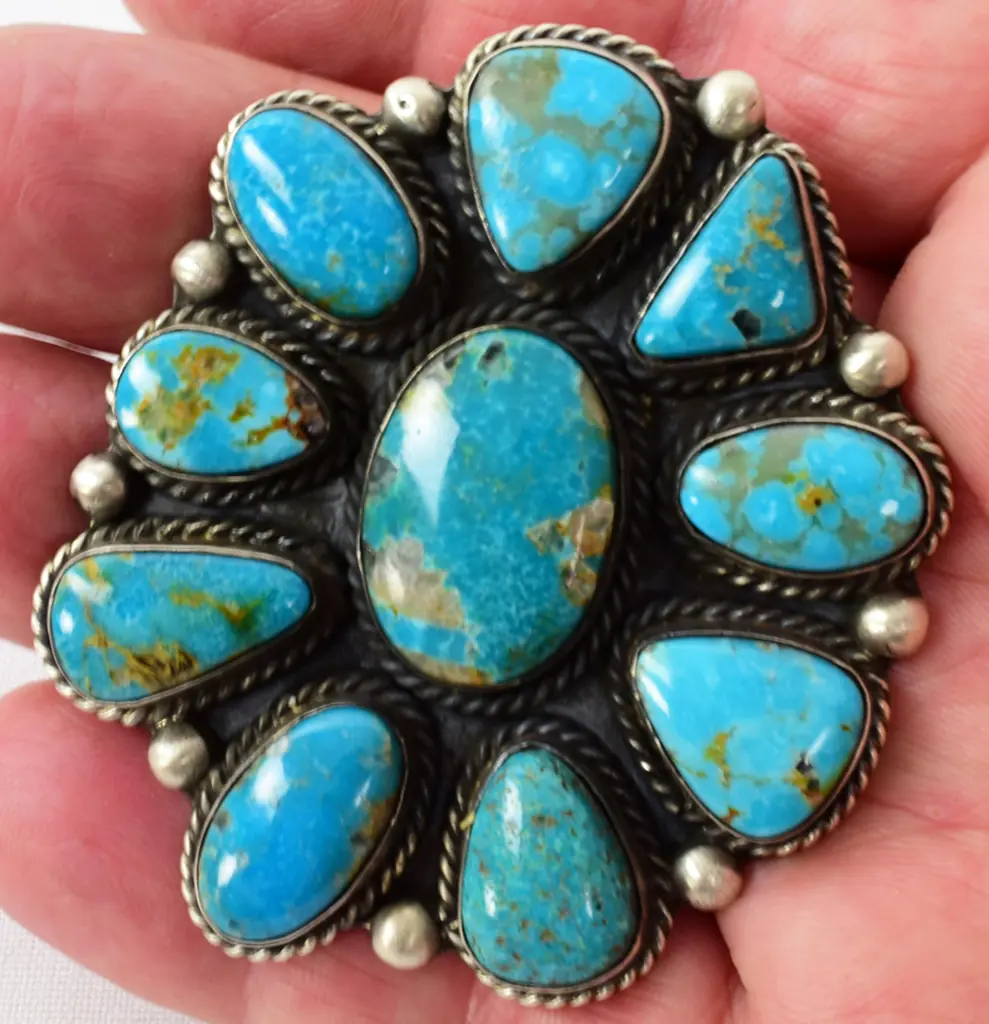
The Pueblo believed turquoise got its color from the sky, and the gem symbolized the God of the sky for them. On the other hand, Hopi thought this gem was produced by lizards scurrying over the Earth. Some tribes even believed turquoise stones to be created from God’s tears. As a result, the Navajo would create sand mandalas (intricate circular designs) using ground turquoise and coral in order to pray for rain.
The Aztecs treasured this December birthstone more than the Spaniards treasured gold and emerald. They used to offer the gemstone as gifts in the temple of Matlalcueye, the Goddess of Fertility and Protection. Furthermore, a fragment of the gem was placed in the mouths of distinguished leaders as a part of their funerary customs, while alive and healthy leaders would wear turquoise bracelets.
The December birthstone turquoise is considered a national gem and treasure of Tibet. It was believed to be a highly spiritual stone connected to the sky and Earth. People thought it brought them health, good fortune, and protection. As a result, they gave it to their children to protect them from falling and wore turquoise to provide them with peace.
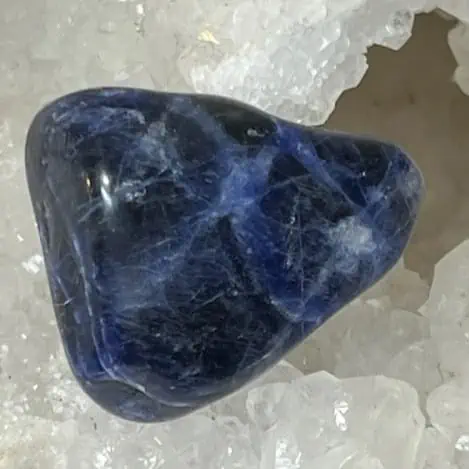
Metaphysical Properties
When it comes to the gem’s special powers, Hindu mystics believed it could bring great wealth to those who saw it after beholding the new moon. Moreover, the third of December’s birthstones grants prosperity, good fortune, and luck in love. When turquoise jewelry is worn close to the heart, it attracts positive energy, spiritual growth, honesty, and happiness, making it the perfect December birthstone gift for a wedding or birthday.
According to folklore, turquoise stones are said to change color as a warning for illness or infidelity. It is even believed the stone would crack to warn its owner of danger, which is why it is often worn as a talisman. Ancient cultures also used the gem in healing depression and anxiety.
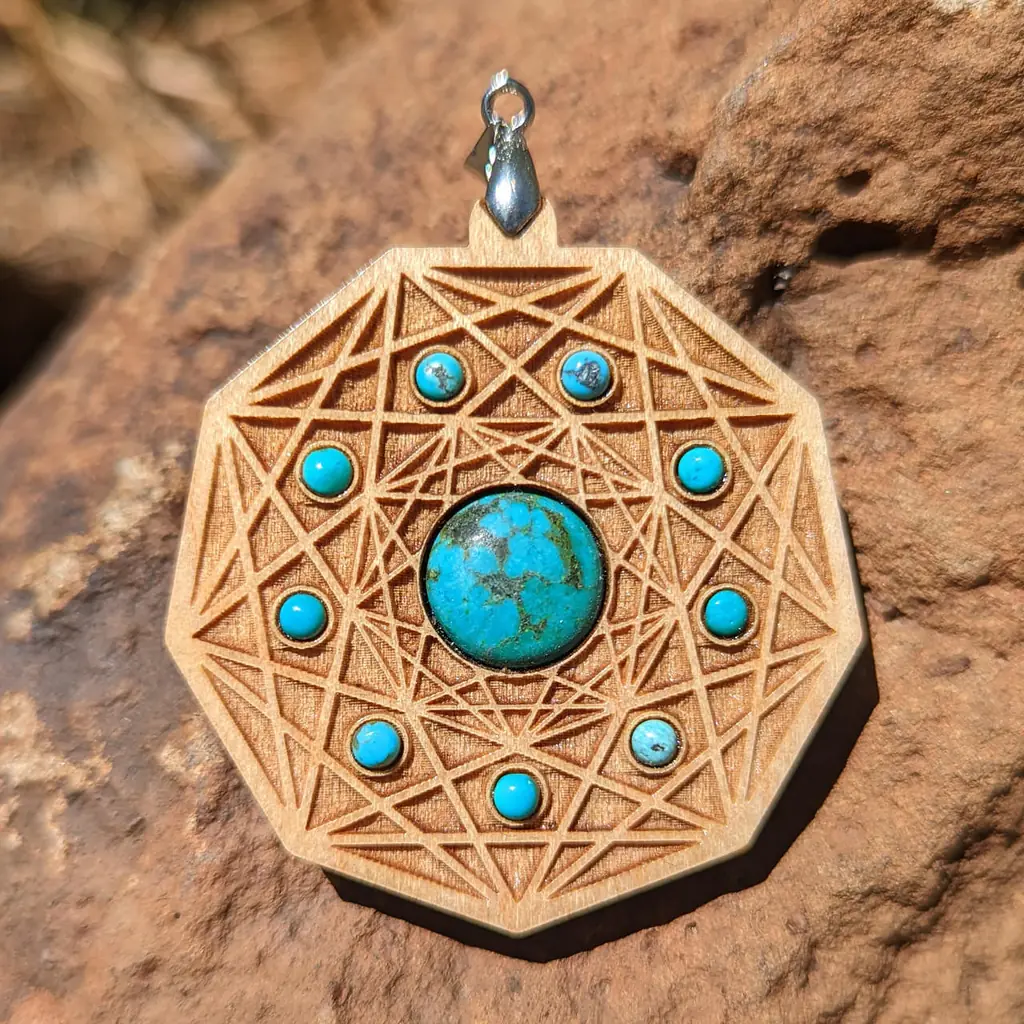
Where is Turquoise found?
For over a millennium, the Nishapur district of Iran has been a site for mining turquoise. As a result, this is a source for one of the world’s most prized, even-colored, rich blue color turquoise, known as “robin’s egg blue,” “sky blue,” and “Persian blue.”
Turquoise production in the United States has shifted over time. While New Mexico used to be the top producer until the 1920s, Arizona and Nevada now account for most of the country’s output. Moreover, The Kingman Mine in Arizona is particularly renowned for its high-quality, vivid blue stones, and it is a historically important source.
On a global scale, China has become the biggest producer of this birthstone for December. The majority of the world’s gem-quality turquoise currently comes from Hubei Province in central China.
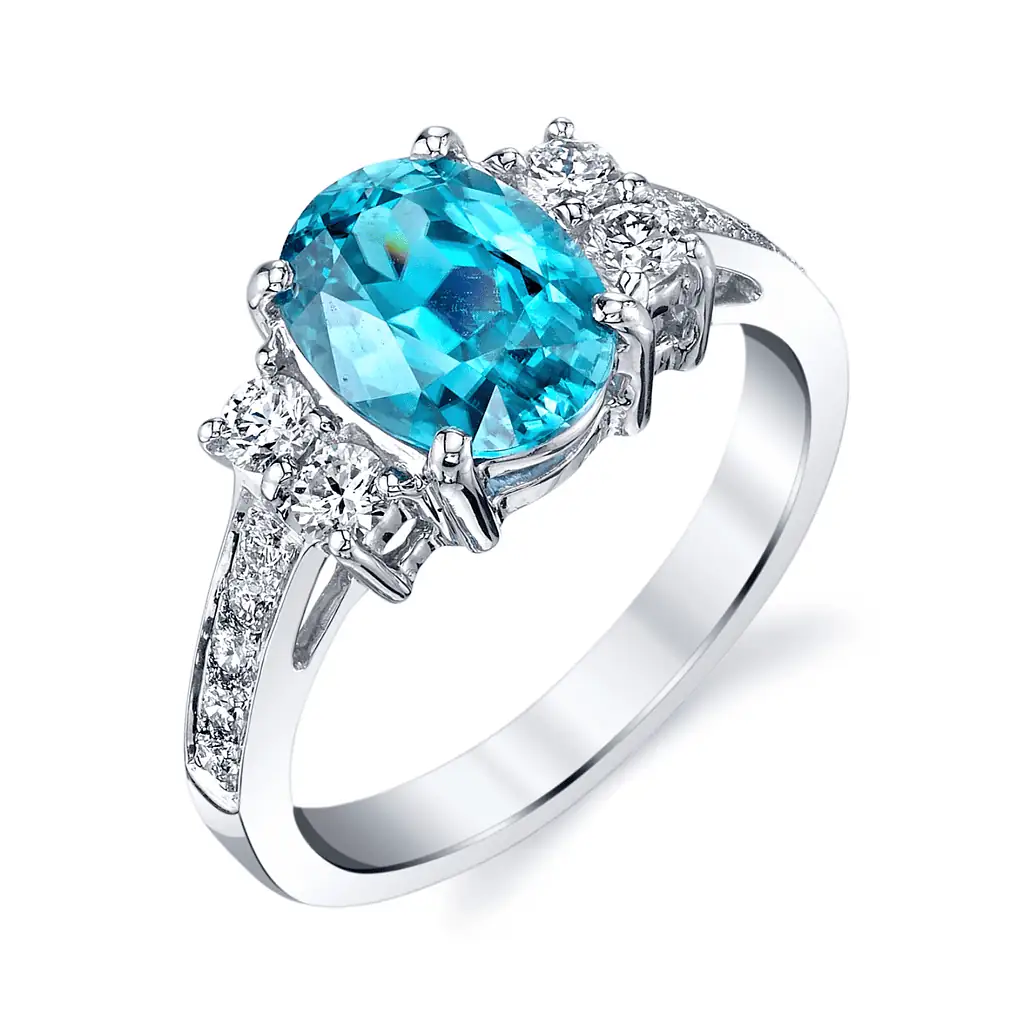
How to Care for Your Turquoise
Of all December birthstones, turquoise rates lowest on the Mohs scale, with a hardness of 5 to 6, and some specimens can score as low as 3. This means it is an incredibly soft and gentle gem. But since this birthstone can be too soft for certain types of jewelry, it is often subject to treatments like being dyed or chemically enhanced by adding epoxy or acrylic resin to improve its durability or color.
Taken that this gem is very delicate, you should clean it with a lot more care and attention. Therefore it is best to clean turquoise with warm water, mild soap, and a very soft brush. In addition, you should never clean your turquoise jewelry with an ultrasonic or steam cleaner. Lastly, avoiding exposing turquoise to steam, heat, chemical solvents, cosmetics, and natural skin oils is important if you want to prevent deterioration. Exposure to such elements can also cause discoloration of the stone.
FAQ
What is the real birthstone of December?
There are three birthstones for December: turquoise, tanzanite, and zircon. These birthstones are mined worldwide, and each has its own unique qualities. Additionally, Blue Topaz is often associated with December, but it has not been officially recognized by the American National Association of Jewelers as a birthstone for this month.
What is December zodiac color?
December’s birthstone’s official color is blue, which is ideal for Sagittarius and Capricorn. It is said that both Zodiac signs can benefit from the calming and relaxing blue color, helping them center, ground their energy, obtain clarity and thrive toward reaching spiritual growth and mindfulness. Also, blue is winter’s color, making it even more ideal for December.


